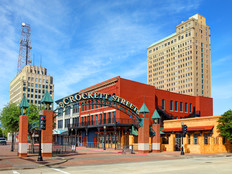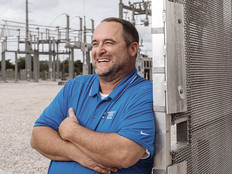City Officials Push for Greater Broadband Access but Note Challenges
Fully three-quarters of American households had a broadband Internet subscription in 2014, according to a new report from the Brookings Institution, a Washington think tank. Yet the research also indicates that there are stark divides in broadband access among different demographic groups and metropolitan areas across the country.
There are divides in broadband adoption even among the nation’s top 100 metropolitan areas, the research finds. For example, cities that are close to high-tech hubs, such as San Jose (88.2 percent), Seattle (84.8 percent) and Boston (82.7 percent), have much higher adoption rates than places like Lakeland, Fla. (64.1 percent); Greensboro, N.C. (64 percent); and McAllen, Texas (58.1 percent).
A group of experts, including city officials and those who work for policy advocacy organizations, convened last week at Brookings to discuss the issue. They talked about the urgent need to expand broadband access and the barriers that are still blocking progress on that front.
The Need for Broadband
Andy Huckaba, a city council member in Lenexa, Kan., said at the event that broadband access is “a basic service” the way telephone service used to be. And he added that while there is a great deal of debate over how fast the broadband connection should be and how pervasively broadband can be deployed, “it’s critical that we get people connected.”
“It’s a global competitive issue,” said Huckaba, who is also a member of the National League of Cities’ Information Technology and Communications steering committee. “It is a local competitive issue in terms of allowing people to be connected and to be productive wherever they are.”
Nicol Turner-Lee, vice president and chief research and policy officer of the Minority Media and Telecommunications Council, said the problem cities face is not just in expanding access but in explaining why broadband is useful. She noted that a July Pew Research Center study found that 15 percent of Americans “are just not using the Internet.”
“And it’s not because it’s not available. It’s just because they have not figured it out,” she said. “And that 15 percent tends to be poor; they tend to be rural; they tend to be seniors; they tend to be those folks who are becoming the other America. So we have to start weighing the options and the feasibility.”
Challenges for Municipal Deployments
Cities face numerous challenges in deploying broadband, including in getting the necessary infrastructure in place, said Ted Smith, chief of civic innovation for the Louisville Metro Government in Louisville, Ky. He said the city is “very much focused on being a fiber-friendly community.”
Although he said that “a lot of people sort of roll their eyes when you say ‘fiber-friendly,’ ” experience has taught him that telecommunications companies will work only with cities that reduce regulatory barriers to infrastructure investment.
“Because we’re never going to have any kind of infrastructure if we aren’t a city that recognizes that we have to streamline the way this infrastructure’s made available,” he said. “So we are about backhaul. We’re about fiber-friendly. And we welcome conversations with everybody about how to solve it for the last mile.”
The “last mile” issue Smith referred to means the last portion of a telecommunications network that actually delivers service to residential customers. Michael Mattmiller, chief technology officer for Seattle, said that the last mile has been a challenge in his city and that under Mayor Ed Murray, Seattle has taken a three-pronged approach to deploying broadband.
First, Seattle reduced regulatory barriers and harmonized its permitting practices in a bid to attract new fiber investments, Mattmiller explained. The city has been able to attract a broadband provider that has built out high-speed Internet service to around 160,000 homes so far in the past 18 months.
Seattle also has focused on public-private partnerships, and it identified parts of the 550 miles of dark fiber (fiber-optic cables that can be leased to others) that surrounds the city that it was not using much. “And our council gave us that authority [to lease the dark fiber], and we now have one company that is offering service to one of our neighborhoods, 100 megabit speed Internet service to that community,” he said, likely referring to Wave’s CondoInternet, which started offering service in late 2014 in the Eastlake neighborhood.
Additionally, Seattle explored the possibility of becoming a municipal broadband provider, Mattmiller said. However, after studying the issue, the city concluded that “the cost of fiber construction is still too great for our municipality to bear.” That cost would be somewhere between $480 million and $660 million, according to Mattmiller. What’s more, due to Washington state laws and regulations, the way the city would need to finance that new utility “would really put our general-fund services at risk should it not be successful.”
Wireless as a Stopgap
Wireless broadband deployments have become “a stopgap in many communities where it’s hard to put infrastructure” in place, according to Turner-Lee.
Indeed, Mattmiller noted that Seattle launched a program last year in partnership with its public library and Google to buy mobile hotspot devices so that citizens could borrow them from libraries. “The program’s been a huge success, and we’re going from about 150 hotspots to 700 next year, and we’ve got more grant applications in for more,” he said.
The problem with leaning on wireless is that it relies on backhaul, which is usually a fiber connection from a cell tower back to the Internet backbone. Huckaba noted that wireless carriers are working to make their networks denser to provide faster speeds and stronger wireless data signals.
“They’re trying to provide higher speeds and better access, and they’re doing it through a lot of a combination of micro cells and mini cells and every other kind of cell that you can imagine to put a name to,” he said. “And the reality is that to each one of those you have to have backhaul. You have to have the ability to hook into the Internet essentially.”








